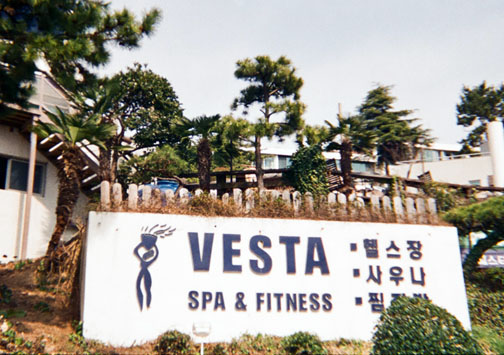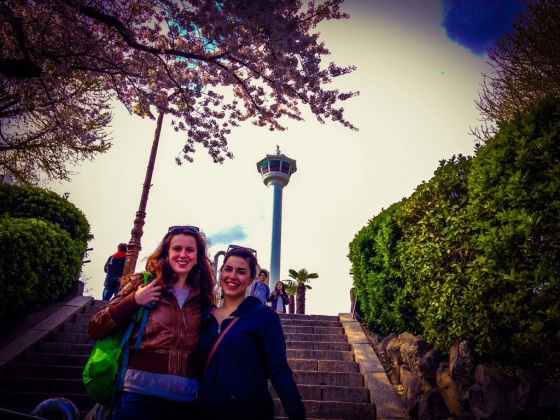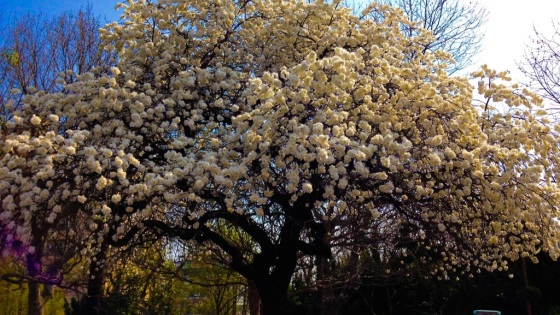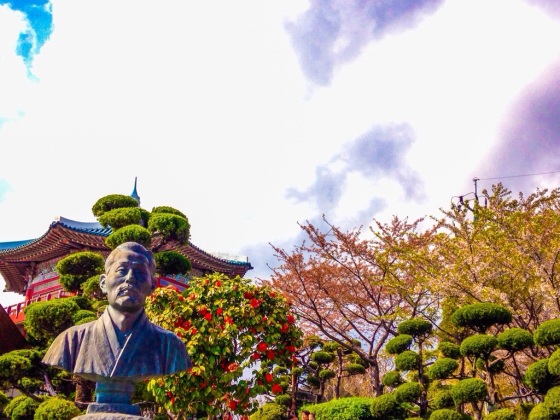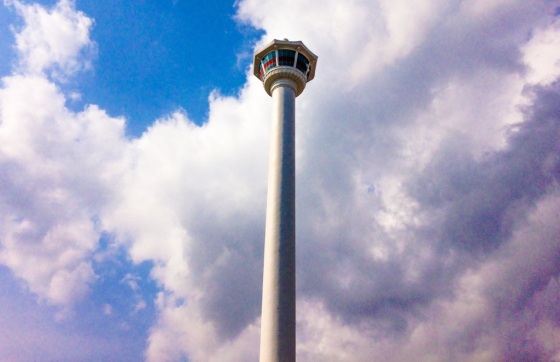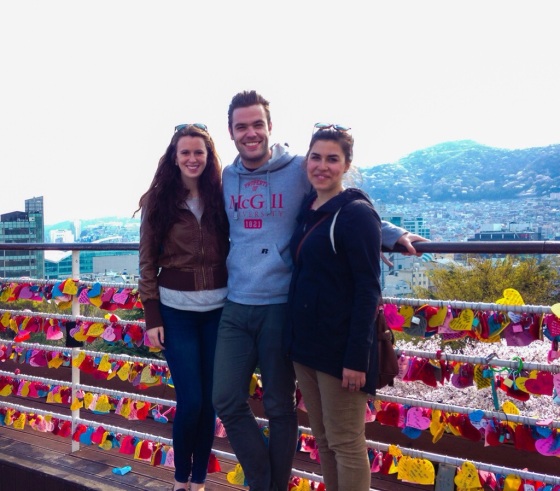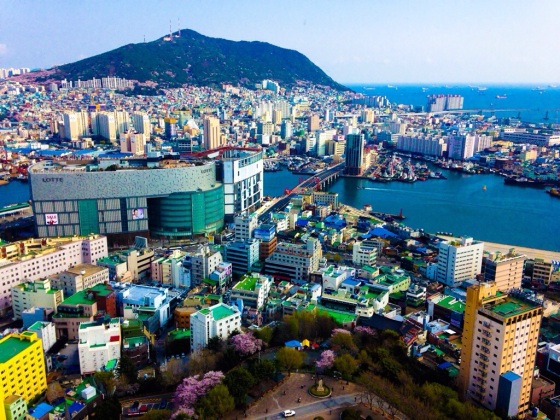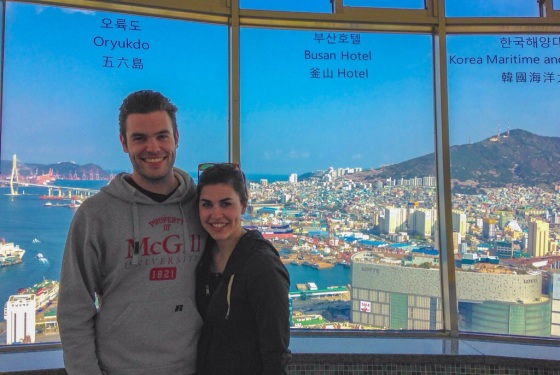This is a Busan Ex-Pat City Guide post. Check out the rest of my list here.
Known as the “Stone Buddha Temple”, or Byeongpung-am (the “Folding Screen Hermitage”), Seokbulsa Temple is perched high upon Geumjeongsanseong Mountain. The temple is a bit of an anomaly – the majority of Koreans and foreigners I’ve spoken to have never heard of it, yet it is consistently ranked as a “must see” by Lonely Planet and other travel blogs. I was excited to be let in on the secrets of Seokbulsa.
I visited the temple in mid-April, a month that was all about early morning wake-up calls on the weekends. Following a Saturday night slumber party with the girls, we woke to an overcast Sunday in Busan. Nonetheless, we laced up our runners, downed our requisite Starbucks lattes, and began the great journey to Seokbulsa.
The subway ride itself was a bit of a voyage, as we had to switch from the green to the brown to the red line. Once we reached Oncheonjang, we caught a cab to the base of Geumgang Park, the grounds which house both Seokbulsa and the Geumjeongsanseong Mountain Fortress. The rain was starting to fall at this point, and I remember thinking, “I hate this already”.
Just beyond the entrance of Geumgang Park, we found the ticketing office for the cable car up to Geumjeongsanseong Mountain. My spirits were lifted at the prospect of being physically lifted up the mountain, plus, I had never taken a cable car before. I’m all about experiencing everything, but I feel like I need to ride a cable car at least once more in my life. The foggy views of Busan’s cityscape and the forest unfolding below us were absolutely breathtaking. I wrote the word “bumnaegol” in the condensation forming on the cable car’s window to mark my time there.
Once we reached the top, the hard work began. Apart from simply mustering the energy to hike to the temple, (we were still very groggy at this point), we also had to effectively navigate our way there. This was much more difficult than we had initially anticipated. We had assumed that we could simply follow a group of hikers to the temple, but quickly learned that there were dozens of trails; some leading the Seokbulsa, some leading to the Geumjeongsanseong Fortress, some leading to Beomeosa Temple, and some simply for meandering nature enthusiasts. The signs, obviously all in Korean, also weren’t exactly a big help to us either (0.8km to what, exactly?!)
Thankfully, a kind Korean gentleman offered his adept navigational skills, and put us on the right path to the temple. Originally, he led us to one of the fortress entrances, but recalculated to lead us through a quaint mountain hamlet, covered in cherry blossom leaves. There were rows of tiny, roofed tents occupied by smiling ajummas serving up rice cakes to groups of hikers sipping on thimbles of soju. The entire scene was completely picturesque, and we all agreed to return for lunch after we visited the temple.
After exiting the village, and gaining some assurances from other hikers (“Say-uk-bowl-sah Tem-pull-uh? This way?”), we finally reached the main path. We crossed small bridges, avoided tripping over numerous jutting rocks and tree roots, and descended a rather perilous flight of stairs bordering a quiet bubbling brook. This rather enchanted forest reminded me a little bit of the grounds surrounding Hogwarts, and I was almost breathlessly waiting for a pack of centaurs to hop out from behind a tree and offer us a ride on their backs to the temple.
The last leg of the journey to the temple can only be described as a “long and winding road”. The majority of the blog posts I had read about Seokbulsa indicated that this part of the hike would be treacherous and awful and so bad that you would slap your own mother in the face to avoid going back down. Apologies for the humble brag, but I didn’t find the hike any more strenuous than Mount Geumnyeonsan or Jangsan Mountain. That said, I was admittedly dripping in sweat by the time we reached the temple. Thankfully, it was a happy sweat.
I don’t know about the girls, but I felt vindicated once we reached the grounds of Seokbulsa. The temple complex housed a small, two-story stone pagoda, much less ostentatious than others I’ve seen throughout Asia. Before ascending the stairs into the temple, we stopped to appreciate the mountains rising from the mist in every direction, the attention to detail on the giant bell that hung in front of the temple, and most importantly, the placid beauty of a virtually deserted temple high above Busan.
Between the giant mountains and the six towering stone Buddhas staring down at me, I was reminded of how insignificant my daily worries are. I felt incredibly humbled as we left the sacred temple, pledging to remember not only how beautifully intricate the carvings were, but also how liberated they made me feel.
I had a very pensive hike back down, trying to internalize my pledge while also reminding myself to keep my weight over my knees – I’m no stranger to the old twisted ankle. After about 25 minutes, we reached the tiny village, where we enjoyed a celebratory meal of pajeon (a Korean pancake primarily made of green onions and leeks) and beer. It felt so good to toast to what we had achieved that day – all before 2PM! While I didn’t enjoy any pajeon (leeks, yuck!), I did try some roasted king crabs, a slightly less adequate snack to pair with beer than, let’s say nuts, but manageable.
If you’re going to brave Seokbulsa Temple, don’t half-ass it: bring snacks (I opted for granola bars and bananas), at least 2L of water (you’re going to sweat a lot), proper footwear (as I said, twisted ankles are no fun, and neither are blisters), as well as a positive attitude.
Seokbulsa is worth it if you’re concerned with gaining street cred for journeying to obscure locales, experiencing new things like riding a cable car or sampling roasted king crabs, and being astounded by the beauty of nature. Otherwise, maybe you ought to stick to Shinsegae.
Directions
To get to Seokbulsa Temple, take the Orange Line on the Busan Subway (Line 1) to Oncheonjang Station (stop 127). I would recommend taking a cab to Geumgang Park (approximately ₩3,500). Enter the park, and follow the signs to the cable car ticketing office. A round trip costs ₩7,000.
This Busan Haps review of Seokbulsa Temple contains very clear directions from the cable car, however, if you do get lost, show the following Hangul (석불사) to a fellow hiker and pray that you receive adequate directions.
















